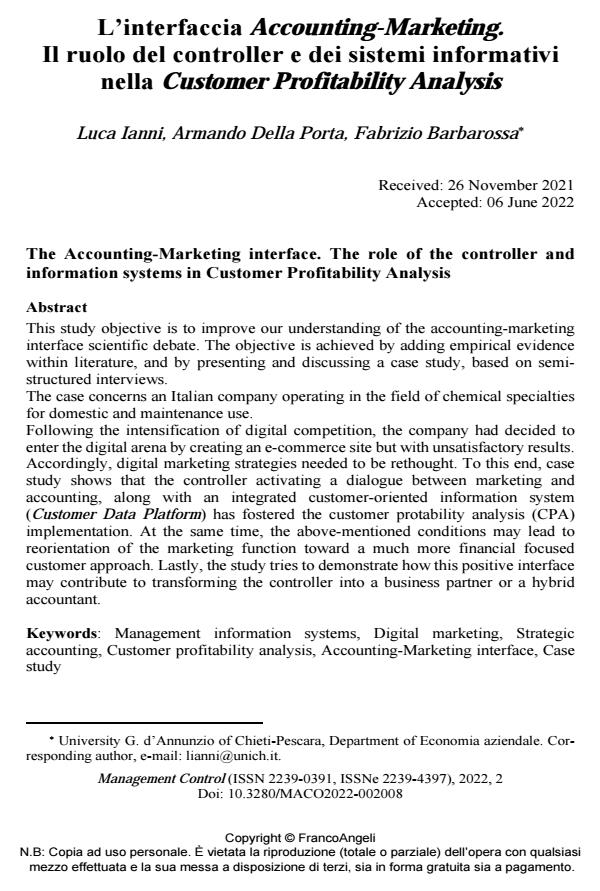L’interfaccia Accounting-Marketing. Il ruolo del controller e dei sistemi informativi nella Customer Profitability Analysis
Titolo Rivista MANAGEMENT CONTROL
Autori/Curatori Luca Ianni, Armando Della Porta, Fabrizio Barbarossa
Anno di pubblicazione 2022 Fascicolo 2022/2
Lingua Italiano Numero pagine 26 P. 165-190 Dimensione file 294 KB
DOI 10.3280/MACO2022-002008
Il DOI è il codice a barre della proprietà intellettuale: per saperne di più
clicca qui
Qui sotto puoi vedere in anteprima la prima pagina di questo articolo.
Se questo articolo ti interessa, lo puoi acquistare (e scaricare in formato pdf) seguendo le facili indicazioni per acquistare il download credit. Acquista Download Credits per scaricare questo Articolo in formato PDF

FrancoAngeli è membro della Publishers International Linking Association, Inc (PILA)associazione indipendente e non profit per facilitare (attraverso i servizi tecnologici implementati da CrossRef.org) l’accesso degli studiosi ai contenuti digitali nelle pubblicazioni professionali e scientifiche
This study objective is to improve our understanding of the accounting-marketing interface scientific debate. The objective is achieved by adding empirical evidence within literature, and by presenting and discussing a case study, based on semi-structured interviews. The case concerns an Italian company operating in the field of chemical specialties for domestic and maintenance use. Following the intensification of digital competition, the company had decided to enter the digital arena by creating an e-commerce site but with unsatisfactory results. Accordingly, digital marketing strategies needed to be rethought. To this end, case study shows that the controller activating a dialogue between marketing and accounting, along with an integrated customer-oriented information system (Customer Data Platform) has fostered the customer protability analysis (CPA) implementation. At the same time, the above-mentioned conditions may lead to reorientation of the marketing function toward a much more financial focused customer approach. Lastly, the study tries to demonstrate how this positive interface may contribute to transforming the controller into a business partner or a hybrid accountant.
Parole chiave:Management information systems, Digital marketing, Strategic accounting, Customer profitability analysis, Accounting-Marketing interface, Case study
Luca Ianni, Armando Della Porta, Fabrizio Barbarossa, L’interfaccia Accounting-Marketing. Il ruolo del controller e dei sistemi informativi nella Customer Profitability Analysis in "MANAGEMENT CONTROL" 2/2022, pp 165-190, DOI: 10.3280/MACO2022-002008